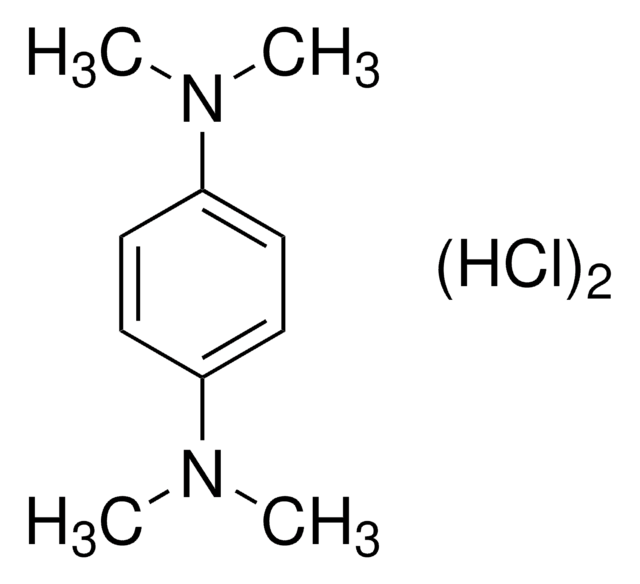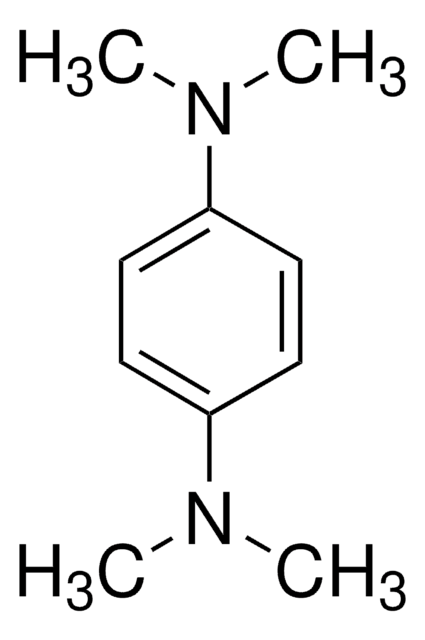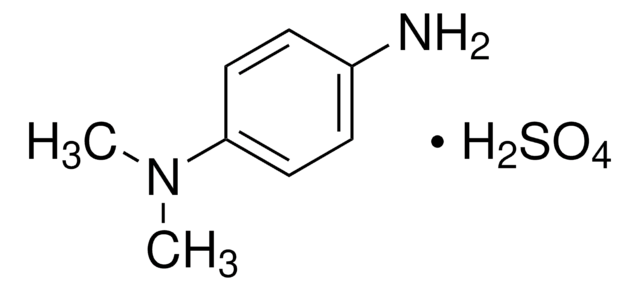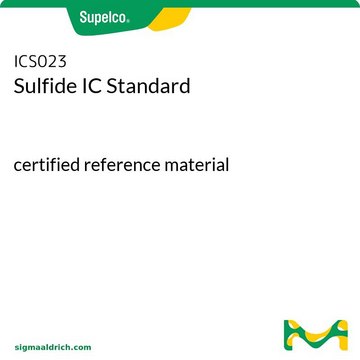07770
N,N-Dimethyl-p-phenylenediamine dihydrochloride
suitable for microbiology, ≥99.0%
Synonym(s):
4-Amino-N,N-dimethylaniline dihydrochloride, DMPD · 2HCl, DMPPDA · 2HCl
About This Item
Recommended Products
Quality Level
Assay
≥99.0% (AT)
≥99.0%
form
powder
loss
≤0.05% loss on ignition
mp
210-215 °C (dec.)
222 °C (dec.) (lit.)
cation traces
Ca: ≤10 mg/kg
Cd: ≤5 mg/kg
Co: ≤5 mg/kg
Cr: ≤5 mg/kg
Cu: ≤5 mg/kg
Fe: ≤5 mg/kg
K: ≤50 mg/kg
Mg: ≤5 mg/kg
Mn: ≤5 mg/kg
Na: ≤500 mg/kg
Ni: ≤5 mg/kg
Pb: ≤5 mg/kg
Zn: ≤5 mg/kg
application(s)
food and beverages
microbiology
SMILES string
Cl[H].Cl[H].CN(C)c1ccc(N)cc1
InChI
1S/C8H12N2.2ClH/c1-10(2)8-5-3-7(9)4-6-8;;/h3-6H,9H2,1-2H3;2*1H
InChI key
IAEDWDXMFDKWFU-UHFFFAOYSA-N
Looking for similar products? Visit Product Comparison Guide
General description
Application
Caution
Signal Word
Danger
Hazard Statements
Precautionary Statements
Hazard Classifications
Acute Tox. 3 Dermal - Acute Tox. 3 Inhalation - Acute Tox. 3 Oral
Storage Class Code
6.1A - Combustible acute toxic Cat. 1 and 2 / very toxic hazardous materials
WGK
WGK 3
Personal Protective Equipment
Choose from one of the most recent versions:
Certificates of Analysis (COA)
Don't see the Right Version?
If you require a particular version, you can look up a specific certificate by the Lot or Batch number.
Already Own This Product?
Find documentation for the products that you have recently purchased in the Document Library.
Our team of scientists has experience in all areas of research including Life Science, Material Science, Chemical Synthesis, Chromatography, Analytical and many others.
Contact Technical Service








